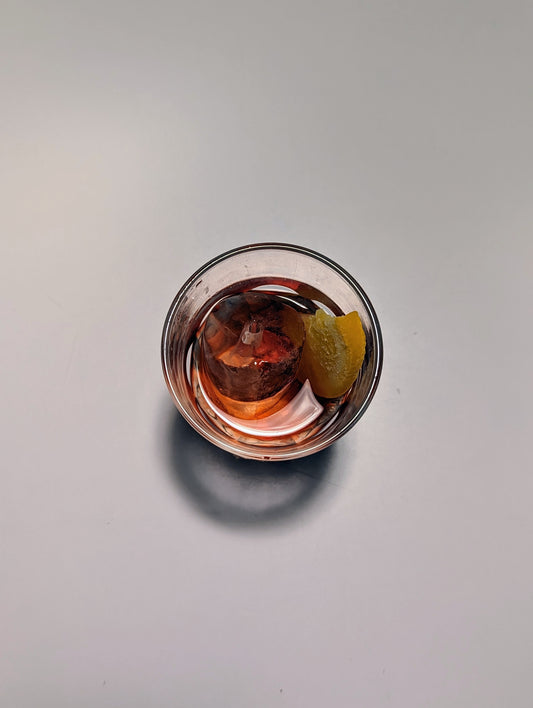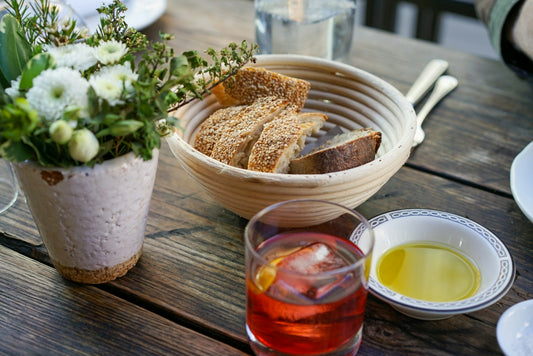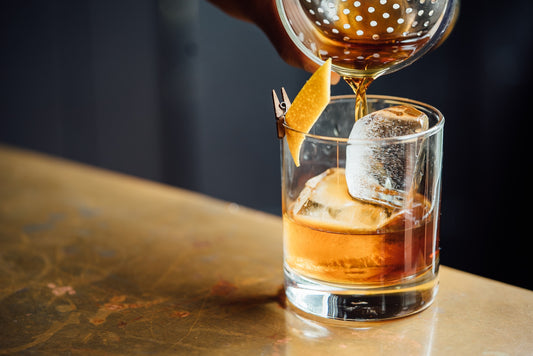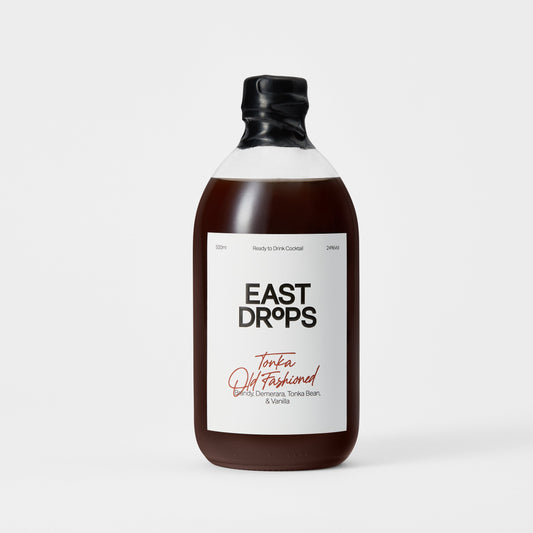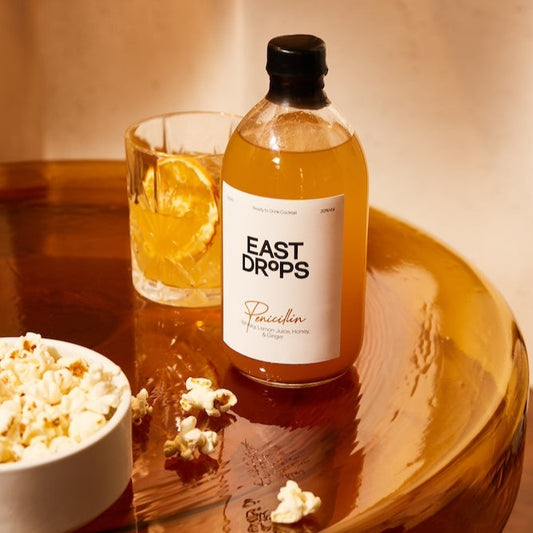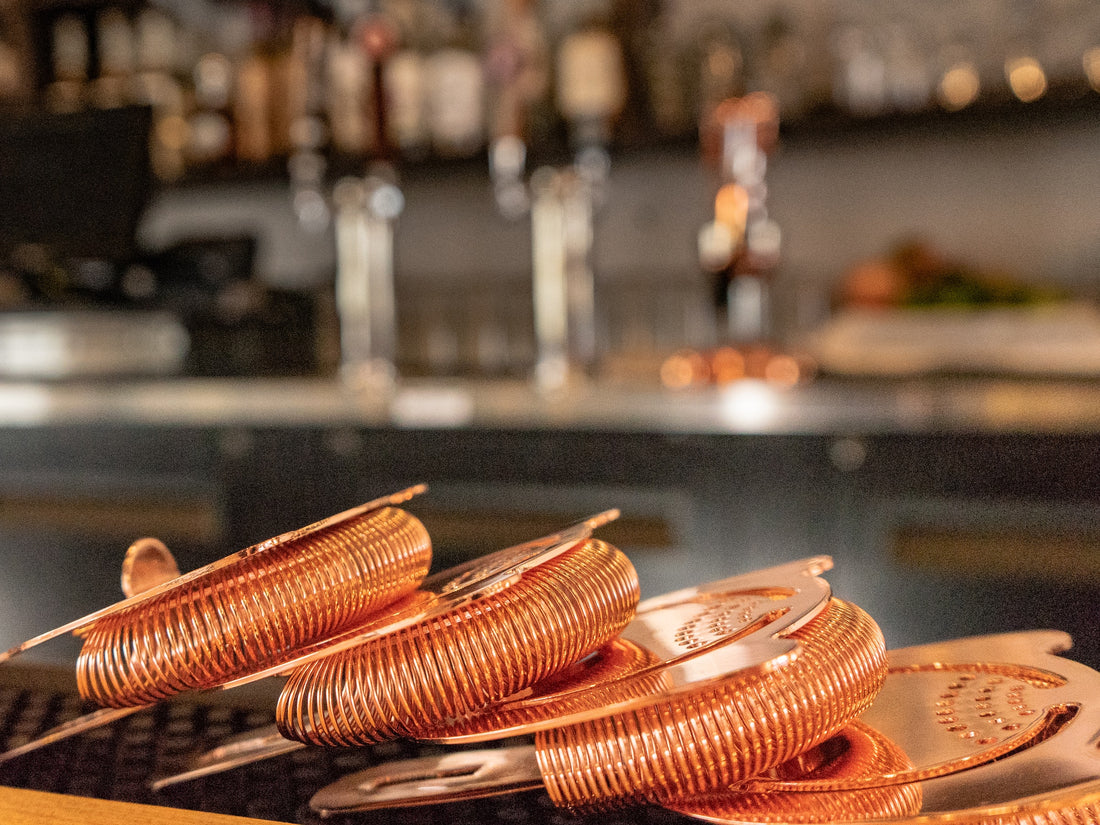
The Essential Tools Every Home Bartender Needs
Immersing oneself in the world of mixology goes beyond just savouring the delectable dance of spirits and flavours in each glass—it's also about embracing the craftsmanship, the artistry, and the ritual of creating something exceptional with your own hands. Every shake, stir, pour, and garnish adds to the richness of the experience, transforming the simple act of making a cocktail into a personal journey of discovery and enjoyment.
A significant part of this mixology journey comes from the intimate interaction with the tools of the trade. Much like a painter with their brushes or a musician with their instrument, a home bartender becomes familiar with the weight of the shaker, the grip of the muddler, the precision of the jigger. These tools become extensions of their hands, helping them to meticulously balance flavours and craft drinks that are as pleasing to the palate as they are to the eye.
At EAST DROPS, we celebrate this mixology journey. We appreciate the delicate balancing act that goes into each cocktail—the perfect harmony of flavours, the subtle dance of spirits, the precise ratio of ingredients. It's an art that we've dedicated ourselves to mastering, so we can deliver professionally crafted, ready-to-drink cocktails right off the shelf. Each bottle of EAST DROPS offers a taste of this commitment to quality, delivering a perfectly balanced cocktail that captures the magic of a skilled bartender's creation.
However, we also understand the allure of donning the mixologist's hat at home, experimenting with your own concoctions, feeling the thrill of crafting something from scratch. Maybe it's for a quiet evening of relaxation, a gathering with friends, or simply the pleasure of mixing and matching flavours—it's a passion we wholeheartedly share and support.
So for those moments when you want to take the reins, to experiment a little at home, to step into the world of mixology, we've curated a list of some essential tools every home bartender needs. This list will arm you with the necessary arsenal to mix, muddle, shake, and pour like a pro, helping you to navigate your mixology journey with ease and sophistication.

1. Cocktail Shaker:
Often considered the cornerstone of any bartender's tool kit, the cocktail shaker isn't just a tool—it's an icon, synonymous with the art of mixology itself. It's used to quickly chill cocktails, perfectly blend flavors, and give your drinks that smooth, well-mixed texture. But not all cocktail shakers are created equal. There are a few types, each with its own pros and cons:
Boston Shaker:
This is the most commonly used shaker in professional bar settings and consists of two parts - a larger glass made of hardened glass, and a smaller tin. They seal together for shaking and can be separated for straining. The benefit of the Boston shaker is that it's simple and versatile. However, it can be a bit tricky for beginners to master the technique of sealing and unsealing the two parts.
Cobbler Shaker:
Also known as a three-piece shaker, the Cobbler is more user-friendly, especially for beginners. It consists of a shaking tin, a built-in strainer, and a smaller lid to cover the strainer while shaking. It's easy to use and perfect for home bars. The built-in strainer is convenient but not as effective as a separate strainer, and cleaning all the parts can be a little more time-consuming.
French Shaker:
A French shaker, or Parisian shaker, is a less common but stylish option. It's a two-piece shaker, like the Boston, but both parts are metal, and it has a more rounded design. It's easier to handle than a Boston shaker and has a sleek, sophisticated look, but it may require a separate strainer.
Tin-on-Tin Shaker:
This is essentially a Boston shaker but with both parts made of metal. Professionals often prefer this style because it forms a good seal, but it's easy to break that seal to open the shaker after use. It's also very durable.
In choosing a cocktail shaker, consider your comfort level with the sealing and straining process, as well as your personal preference for the shaker's material and appearance. Whichever style of shaker you choose, it's sure to become a centrepiece of your home bar. And remember, while the tools are important, the magic really happens when they meet quality ingredients - like those in every bottle of EAST DROPS.

2. Jigger:
Precision and balance are key elements in the art of crafting a perfect cocktail. Even a slight alteration in the amount of a particular ingredient can drastically change the taste and character of your drink. This is where the jigger comes in.
A jigger is an essential measuring tool in any bartender's toolkit. It ensures that the right quantity of each ingredient is added to your cocktail, bringing harmony and balance to the flavours. At first glance, it may seem like a simple, double-ended cup, but it plays a crucial role in creating a consistent cocktail experience.
There are a few types of jiggers, each with its unique characteristics:
Standard Jigger:
This is the most common type and is hourglass-shaped, featuring two cones connected at the center. One cone typically measures a full shot (1.5 ounces in the U.S., but it can vary globally), while the other measures a half-shot (0.75 ounces). This design allows for quick switching between measurements.
Japanese Jigger:
Elegant and elongated, Japanese jiggers are known for their precision and accuracy. They are tall and narrow, making it easier to measure the exact quantity. They come in various sizes, with markings for different measurements, making them versatile and highly precise.
Bell Jigger:
Bell jiggers are a blend of the Standard and Japanese styles. They have an hourglass shape similar to a Standard jigger but are taller and narrower like a Japanese jigger, offering a balance between comfort and precision.
Beyond the style, you'll find jiggers made of different materials, such as stainless steel, copper, or even gold-plated. While these choices largely come down to personal preference, it's crucial to choose a jigger that has clear measurement markings, is comfortable to hold, and is easy to pour without spilling.
In the end, mastering the jigger is an essential skill in mixology, whether you're a professional bartender or a home enthusiast. It's the key to consistency, ensuring each cocktail you craft is as delicious and balanced as the one before. At EAST DROPS, we measure our ingredients with meticulous precision, so every sip of our cocktails brings you the perfect harmony of flavours.
A bar spoon might appear to be a simple, elongated spoon at first glance, but it's an essential tool in the world of mixology. Beyond just stirring, it serves multiple purposes in the cocktail-making process, proving that sometimes the simplest tools can be the most versatile.
The primary function of a bar spoon is to stir cocktails. Proper stirring techniques can mix the ingredients effectively while keeping the cocktail clear and preventing over-dilution. A gentle, well-executed stir can preserve the clarity and texture of drinks that should not be shaken, like a classic Martini or a Negroni.
Bar spoons come in various styles, each with its unique design elements:
American Style:
The American bar spoon, also known as the "teardrop" style, is known for its simplicity. It usually has a twisted handle for easy grip and a small disc or 'teardrop' at the end, which can be used for muddling.
European Style:
European bar spoons often have a fork on one end, making them a multi-purpose tool. The fork can be used for picking garnishes, while the spoon end is used for stirring.
Japanese Style:
Japanese bar spoons are often praised for their elegance and balance. They usually feature a longer, more slender profile and a flat, tear-shaped end. Their design makes them particularly comfortable for stirring.
The length of a bar spoon also plays a significant role. It should be long enough to reach the bottom of your tallest mixing glass or shaker. Most bar spoons range from 10 to 12 inches long.
The twisted handle isn't just for aesthetics or grip; it also helps guide the spoon around the glass during stirring, providing control and precision. Plus, it can be used for layering drinks to create visual appeal and distinct flavor sections.
In the end, the bar spoon is a testament to the delicate nuances that make the art of cocktail-making so special. Whether you're stirring a spoonful of sugar into an Old-Fashioned or layering a Black and Tan, a good bar spoon is a must-have tool for any mixology enthusiast. It's these details in preparation that define the experience of EAST DROPS, ensuring every sip of our cocktails is a testament to the art of mixology.

4. Strainer:
A strainer is an unsung hero in the mixology world. While it may not have the iconic status of a shaker or the elegance of a bar spoon, it plays an indispensable role in creating a smooth, enjoyable cocktail experience. Its primary function is to separate the unwanted solid ingredients—like ice, fruit pulp, herbs, or seeds—from the liquid cocktail, ensuring every sip is smooth and free from debris.
There are a few types of strainers, each designed for a specific purpose:
Hawthorne Strainer:
This is the most common type of strainer used in cocktail making. It's a flat disc (called the "rim") attached to a coiled spring. The spring allows the Hawthorne strainer to fit various shaker and glass sizes and strains out large pieces of ice and fruit. The holes in the rim let the cocktail flow through while the spring catches larger solids.
Julep Strainer:
Originally designed for Mint Juleps to hold the crushed ice back as you sip, the Julep strainer is a great all-purpose tool. It's a perforated, spoon-like disc with a handle, and it fits well into mixing glasses. While it's not as versatile as the Hawthorne, it's perfect for stirred cocktails and is often preferred by bartenders working with mixing glasses.
Fine Strainer:
Also known as a "tea strainer," the fine strainer is used in conjunction with the Hawthorne or Julep strainer to catch the smallest bits that the first strainer might miss, like tiny ice shards or minute bits of herbs. It's particularly useful when you want a very smooth, clear cocktail.
Conical Strainer:
This strainer is similar to a fine strainer but in a conical shape, offering a larger straining area. It's handy for straining out fine sediment from larger volume mixes.
When choosing a strainer, consider what type of cocktails you like to make. If you love shaking up cocktails with fresh fruits or herbs, a Hawthorne strainer could be your best bet. If you're more into stirred, spirit-forward cocktails, a Julep strainer might serve you well. And, if you aim for absolute smoothness in your drinks, a fine or conical strainer is a good addition.
5. Muddler:
A muddler is a bartender's equivalent of a chef's mortar and pestle. It's used to gently crush—or "muddle"—ingredients to release their flavors, without breaking them down completely or creating a mushy mess. The aim is to extract the essential oils or juice from ingredients like fresh fruit, herbs, and spices, blending them seamlessly into your cocktail.
Muddlers come in various styles and are made from different materials:
Wooden Muddlers:
These are the traditional choice and are often made from hardwoods like maple, cherry, or walnut. They're ideal for gently bruising ingredients to release flavors. However, they require careful cleaning to prevent flavor carryover, and they should not be soaked, as this can cause them to split or crack over time.
Stainless Steel Muddlers:
These muddlers usually feature a plastic or rubber head. They're easy to clean, durable, and often dishwasher safe. The non-porous material prevents flavor transfer, but care should be taken not to over-muddle and break down ingredients too much.
Plastic Muddlers:
While not as common, plastic muddlers are easy to clean and affordable. They're typically not as durable as wood or stainless steel, but they're a good option for casual home use.
When choosing a muddler, consider the length—it should be long enough to reach the bottom of your tallest glass. The bottom end can be flat or rounded, and some muddlers have 'teeth' on the end for more effectively muddling ingredients. A comfortable grip is also important.
The muddler is a crucial tool for classic cocktails like the Mojito, where fresh mint leaves are muddled with sugar, or the Old-Fashioned, which involves muddling sugar with bitters. However, muddling is an art—too much force can result in a bitter taste due to over-crushing the ingredients, while too little force won't release enough flavour.
At EAST DROPS, our ready-to-drink cocktails capture the essence of expertly muddled ingredients, offering you the vibrant flavours and freshness of a handcrafted cocktail without the need for a muddler.
6. Citrus Juicer:
Fresh citrus juice is a key ingredient in many cocktail recipes, adding a burst of vibrant flavor and acidity that balances the sweetness of other ingredients. A citrus juicer allows you to extract this fresh juice easily and efficiently, making it an essential tool in a bartender's kit.
There are a few different types of citrus juicers:
Handheld Juicer or Reamer:
This type of juicer is simple yet effective. It's a manual tool with a ridged cone onto which you press and twist your citrus fruit, and the juice is extracted and collected below. Handheld juicers are compact, easy to clean, and perfect for juicing a small number of fruits.
Squeezer:
Squeezers are another form of manual juicers. You place a halved citrus fruit in the squeezer, then compress the handles to extract the juice. Squeezers are ideal for getting the maximum juice out of your fruit with minimal effort, and they come in different sizes for various types of citrus.
Press:
Presses are larger and more robust. They use a lever mechanism to apply pressure and extract juice. While they might be overkill for casual home use, they're great for situations where you need to juice a large quantity of citrus quickly.
Electric Juicer:
These juicers are the most efficient, requiring the least amount of effort. They're perfect for juicing large quantities of fruit quickly and are typically easy to clean.
When selecting a juicer, consider the volume of juice you'll typically need and how much effort you're willing to exert. If you're making a single cocktail, a handheld juicer or squeezer is usually sufficient. But if you're making cocktails for a crowd, a press or electric juicer might be more practical.
Freshly squeezed juice can elevate a cocktail from good to exceptional, adding a brightness and depth of flavour that pre-packaged juice can't match. At EAST DROPS, we understand the importance of fresh, quality ingredients. Our cocktails are crafted with the freshest juices, capturing that zing of freshly-squeezed citrus in every bottle.
7. Ice Bucket and Tongs:
Ice is an essential element in most cocktails, whether it's used for shaking, stirring, or serving. A well-insulated ice bucket and a set of tongs are key accessories for any home bartender to manage this crucial ingredient efficiently and hygienically.
Ice Bucket:
The main purpose of an ice bucket is to hold ice for your cocktails, keeping it close at hand and properly chilled throughout your cocktail preparation and serving process. A good ice bucket should be well-insulated to keep the ice from melting too quickly, even in warm weather.
Ice buckets come in a variety of materials, including stainless steel, glass, and plastic. Stainless steel is a popular choice due to its excellent insulation properties and durability. Many ice buckets also come with lids, further helping to maintain the temperature and protect the ice from contaminants.
Tongs:
Tongs are essential for handling ice hygienically. They allow you to pick up and transfer ice cubes from the bucket to your glass, shaker, or mixing glass without touching the ice with your hands. This not only helps to maintain cleanliness but also prevents the heat from your hands from prematurely melting the ice.
Tongs are typically made of stainless steel for durability and ease of cleaning, and they often come with teeth or claws on the ends to grip the ice effectively.
It's worth mentioning that the type of ice you use in your cocktails can significantly impact their taste and presentation. Large, clear ice cubes are ideal for slow dilution in straight-served drinks, while crushed ice is perfect for fast-chilling shaken or blended cocktails.
8. Bottle Opener and Corkscrew:
Serving a cocktail is not just about mixing drinks; it also involves managing an array of bottles - some capped, some corked. That's where a good bottle opener and corkscrew come into play. They are essential tools for any home bartender, allowing you to open a variety of bottles with ease and style.
Bottle Opener:
A bottle opener is used to remove metal caps from bottles, such as beer bottles or some soda bottles. They come in various designs and sizes, but the most common type used in bars is the "speed opener," also known as a bar blade. It's a flat, metal tool that allows for quick and efficient bottle opening, and its slim design makes it easy to carry in a pocket.
Corkscrew:
A corkscrew is a tool specifically designed to remove corks from wine bottles. It's named for its helix-shaped metal rod (the "worm"), which is inserted into the cork and used to extract it.
There are many types of corkscrews, but some popular ones include:
-
Waiter's Friend: Also known as a wine key, this is a favorite among bartenders due to its compact, multi-use design. It includes a lever for easy cork removal and often features a small knife for cutting the foil on wine bottles.
-
Winged Corkscrew: This type of corkscrew is simple to use, making it a good choice for beginners. As the worm is twisted into the cork, the two levers (or "wings") rise. Pushing them down again extracts the cork.
-
Lever Corkscrew: This is a larger, more ergonomic type of corkscrew. It uses a lever mechanism to remove the cork, which can be easier and faster but is also bulkier.
While many cocktails primarily use spirits that are often twist-off or stoppered, certain cocktail recipes call for ingredients like wine, vermouth, or bottled mixers, making a bottle opener and corkscrew handy tools to have.
9. Glassware:
Just as a chef presents their dishes on specific plates to enhance the dining experience, the right glassware is crucial to the enjoyment of a cocktail. It can influence the temperature, color, aroma, and even the taste of your drink. Glassware also contributes significantly to the aesthetics of cocktail presentation.
Different cocktails call for different types of glasses, each designed to highlight the unique features of the drink it holds:
Martini Glass:
Also known as a cocktail glass, the martini glass has a cone-shaped bowl and a long stem to prevent your hand from warming the drink. It's typically used for serving 'up' cocktails—those shaken or stirred with ice, then strained into the glass.
Highball and Collins Glasses:
These tall, straight glasses are perfect for cocktails served 'long' over ice and topped with a large volume of a non-alcoholic mixer. Highball glasses are shorter and wider, while Collins glasses are taller and narrower.
Old Fashioned Glass:
Also known as a lowball or rocks glass, this short tumbler is typically used for spirit-forward cocktails served 'on the rocks' or neat. It's the glass of choice for classic cocktails like the Old Fashioned and the Negroni.
Coupe Glass:
With its broad, shallow bowl, the coupe glass is excellent for 'up' cocktails and is a popular alternative to the martini glass. It's particularly great for showcasing frothy cocktails, as it highlights the texture on top.
Flute:
The flute's tall, narrow design helps preserve the bubbles in sparkling cocktails like the Mimosa or Bellini, while also allowing their aromas to concentrate at the top of the glass.
Copper Mug:
Best known as the vessel for Moscow Mules, copper mugs are loved for their ability to keep drinks cold. Their handles keep your hand away from the drink, preventing it from warming up.
Remember, the glass you choose can either enhance or detract from your cocktail experience, influencing not just the drink's taste and aroma, but also its visual appeal.
At EAST DROPS, we've perfected the art of the ready-to-drink cocktail. Each cocktail in our range is expertly crafted for balanced flavours and a beautiful presentation—even if your glassware at home is a bit limited. Enjoy our cocktails in any glass you have on hand, or match your drink to its ideal glassware for an elevated cocktail experience.

